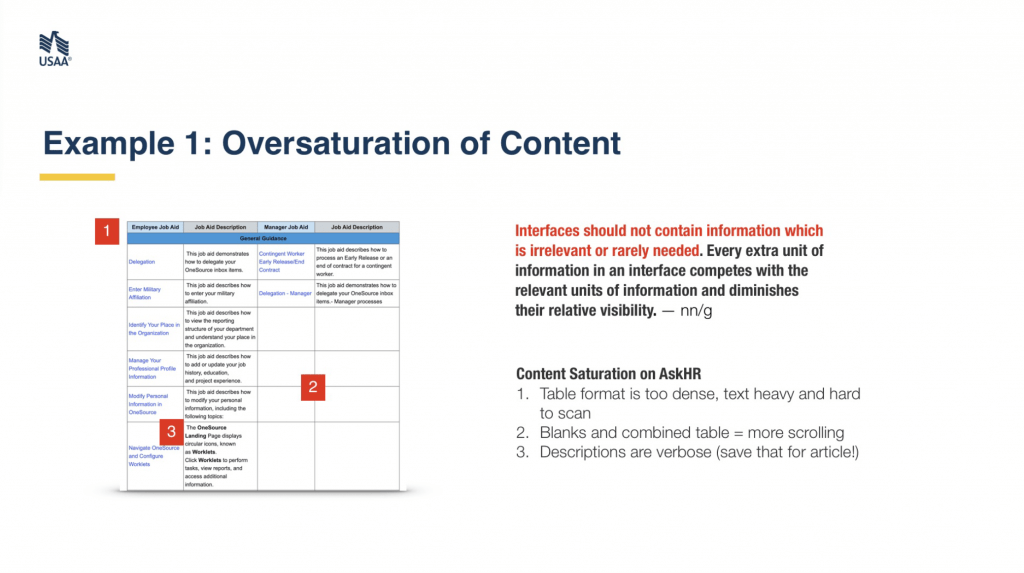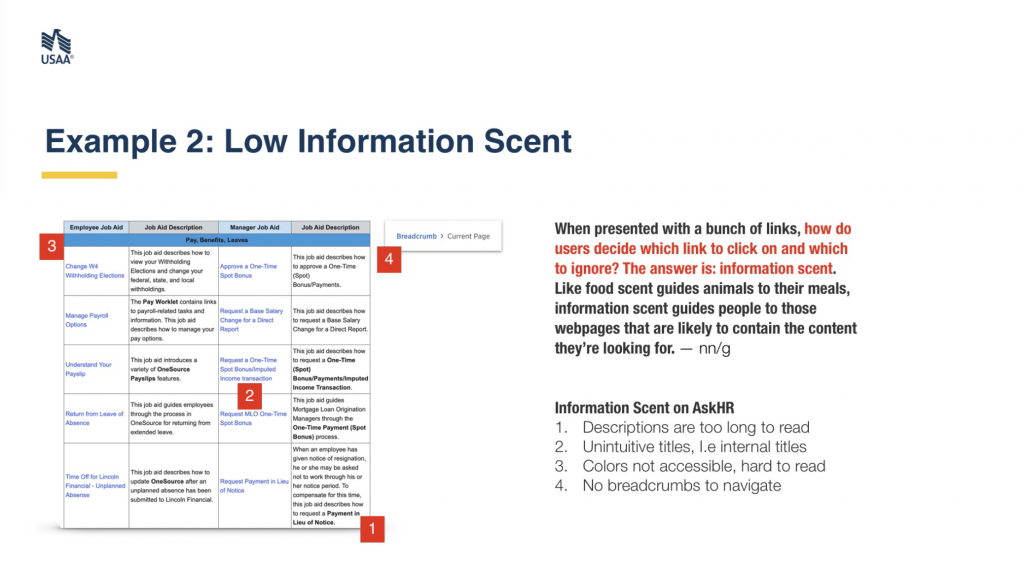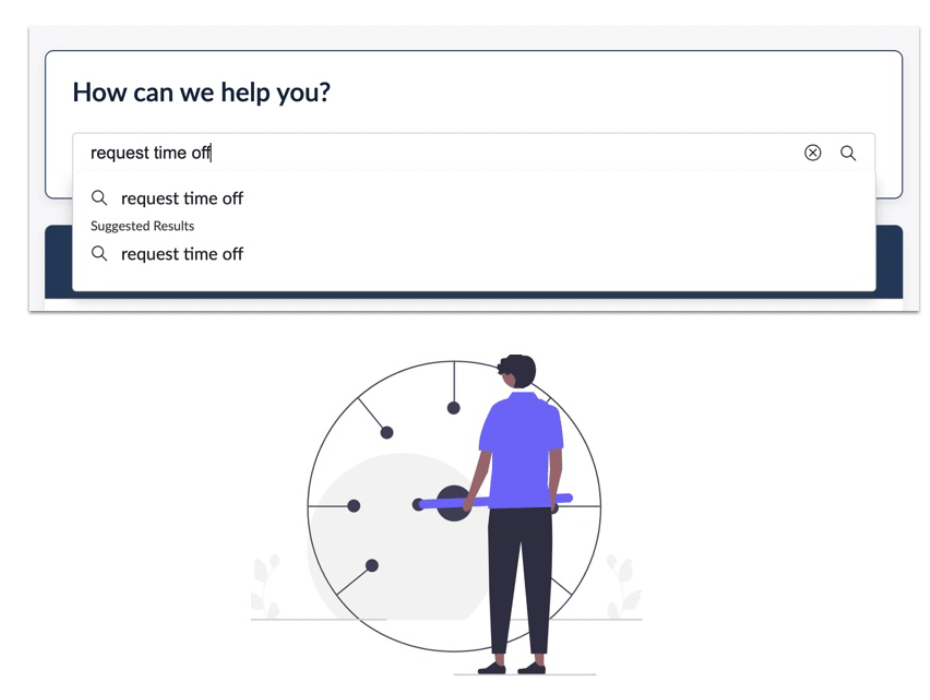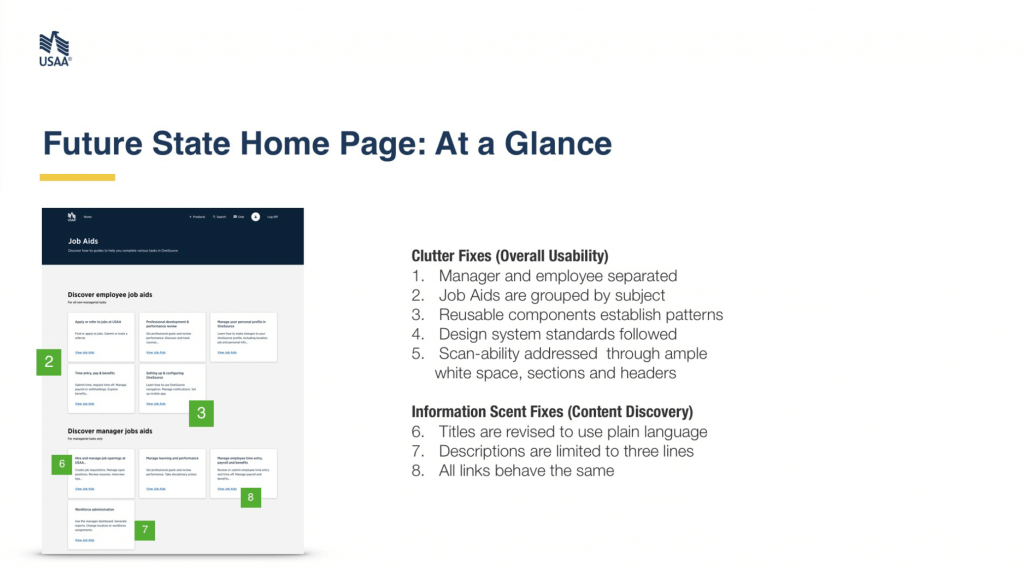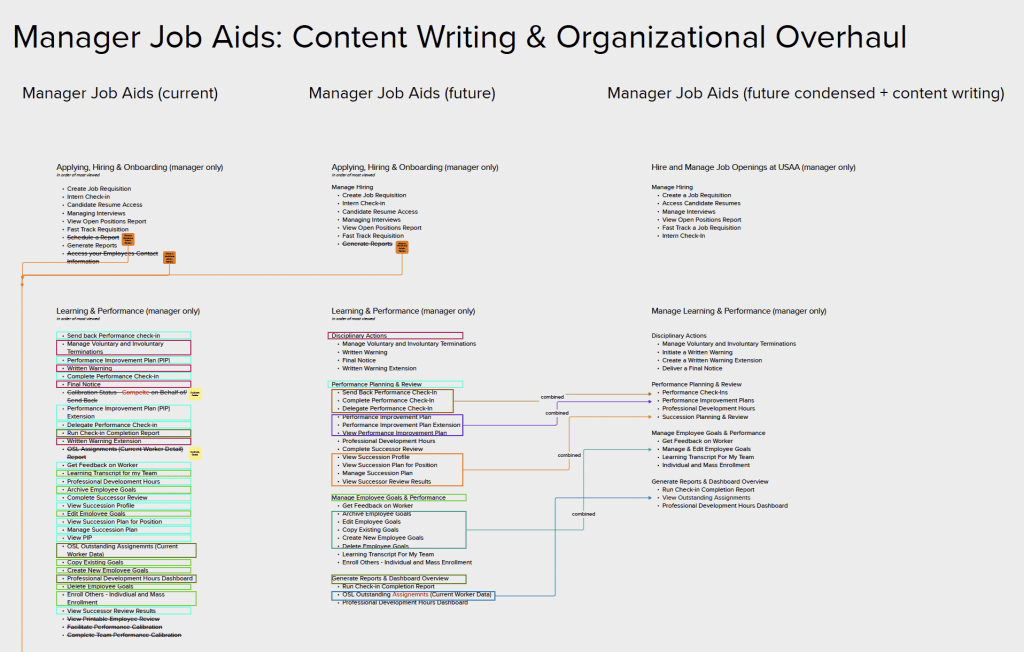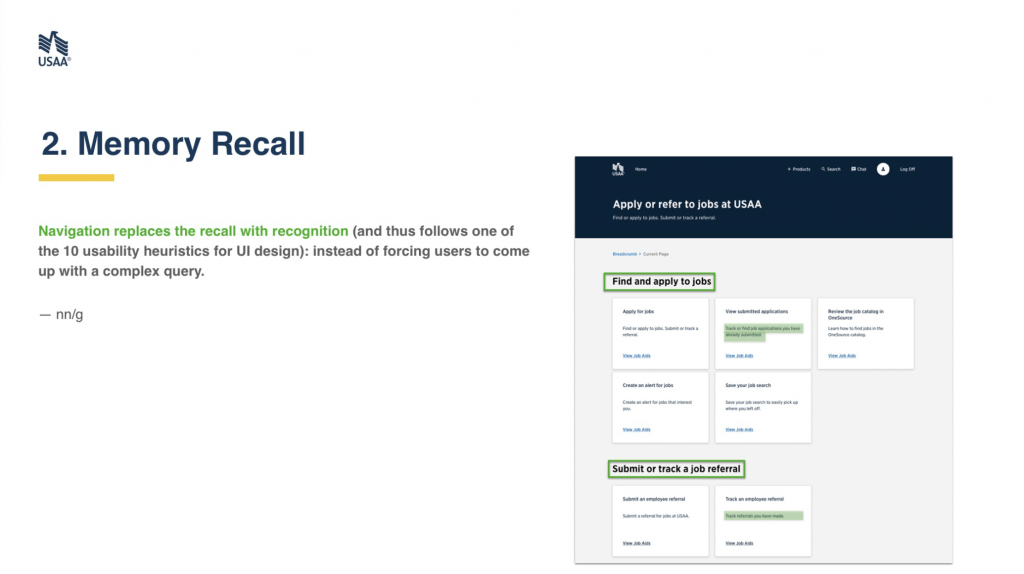Executive Summary
I worked as senior designer on this project, as both a design consultant and solo designer to inform HR on needed changes.
Problem:
AskHR is an intranet that was launched in the summer 2023. However, much of the content was a simple “lift and shift.” I was asked to focus on Job Aids, since HR wanted to focus on increasing their usage and reduce costly calls to the service center.
Solution:
Using design reviews and interaction design testing, I proposed a number of solutions related to improved content writing, information architecture and a re-designed UI to increase discoverability of job aids.
This project did not move into production due to developer limitations. It is unclear when this will be picked up from backlog.
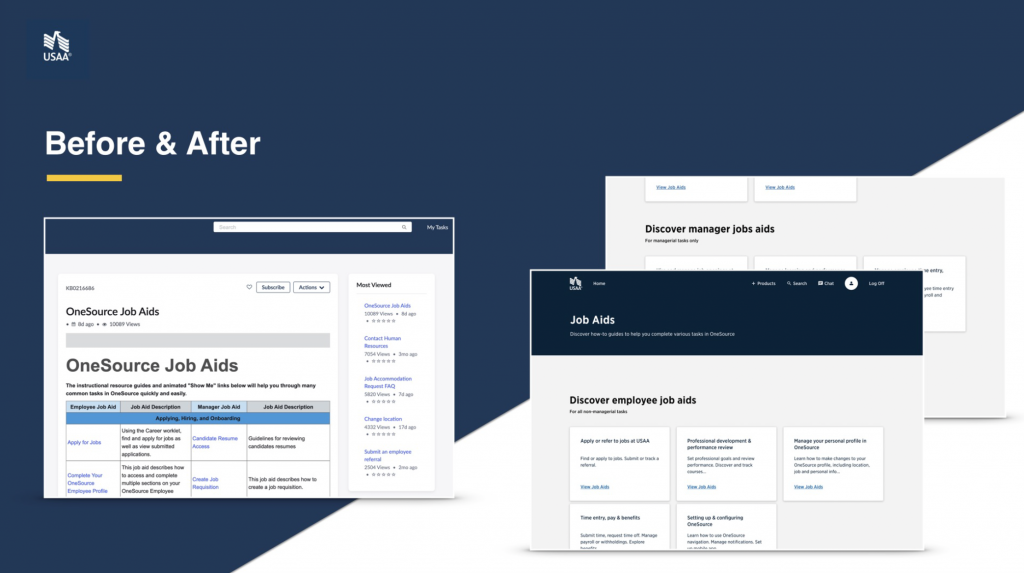
Research
I began with a design review, to critically analyze three things:
1. Information Architecture
2. Content Writing
3. Search
Stakeholders wanted to go with a search-only solution for Job Aids, which of course is against design best practices. They felt their Intranet was perfectly usable, so it was important to highlight WHY the design needs to change before I could even get the buy-in to do more research to convince stakeholders to expand their scope to address wider interaction design and content problems.
After the design review, I conducted several remote observation tests, with various prompts to test the current state with users.
What’s wrong with the AskHR Job Aids page in the current state?
The first aspects I looked at was the Job Aid page itself. It combined all information into tables, with no effort put towards content writing, discovery, design etc. It is the perfect demonstration of “lift and shift.”
Beyond taking issue with the layout, I also spent time to carefully rewrite every single Job Aid, from title to description using principles of UX Writing. The hope was to then develop a report which would capture increased page clicks based on the assumption that content rewrites would improve discoverability.
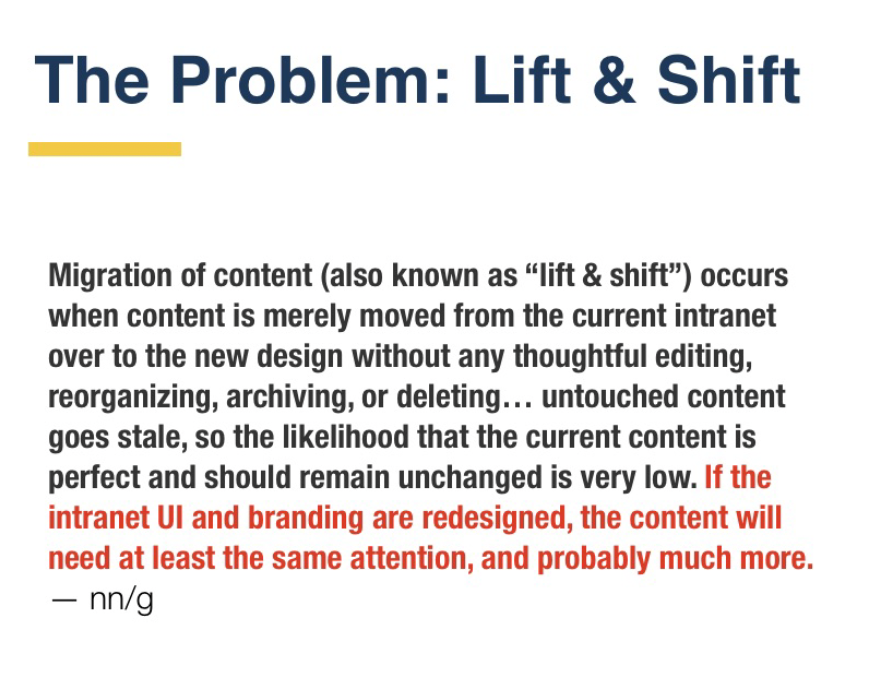
The second aspect of the design review beyond information architecture and content writing was search, specifically the insistence by stakeholders of using a search-only method of discovery.
Search has a very high interaction cost, and users often expect intranet search to function like Google– it doesn’t.
While it might seem like the corresponding search query is straight forward, 0/5 users tested were able to discover the corresponding Job Aid using the search method. The search results page was crowded with extemporaneous information, and did not sufficiently use meta-tags or ranking of results to help users make a selection. Users got frustrated and gave up.
Solution Design
I proposed the following solutions based on design review and current state user testing.
The first instinct was to separate manager and employee job aids, based on feedback and design review. I applied rigorous content rewrites (as pictured partially above). The content rewrite also called for the appropriate deletion or combination of Job Aids into a single article or category to reduce bloat. Organization of content rewrites were then sorted into categories based on page-click data (i.e what do users look for most?) UX writing also helps inform meta-tags to improve discoverability. Using the design system for web development, I added reusable components for maintainable code and proven accessibility. Note: this is a mid-level design and some aspects like iconography, hero images etc. are absent.
The next solutions focused on search. It is important for users to build mental models of what search could reveal, as well as to inform them of the logical organization of the space in which they are searching. Categorized landing pages are also a backup for users when search fails.
By focusing on content writing and ranking information based on how people interpret language (i.e avoid HR terms) we are able to produce scannable content that also helps users to recall information based on the content organization. This actually helps them to search in the future. The content rewrite also helps inform and test meta-tags for improved search.
Conclusion
The project did not move forward due to developer constraints. I made several additions to backlog to help future designers pick up and continue to carry this work forward. While my scope was confined to Job Aids, I took a holistic approach to recommending similar content and information architecture overhauls by conducting a heuristic evaluation of the overall site with impartial designer QA experts. It is believed that by reforming AskHR to improve content, search and information architecture there will be increased use of the site and therefore fewer calls to the service center. Acceptance criteria would review calls data related to help items as well as Job Aid click data.
